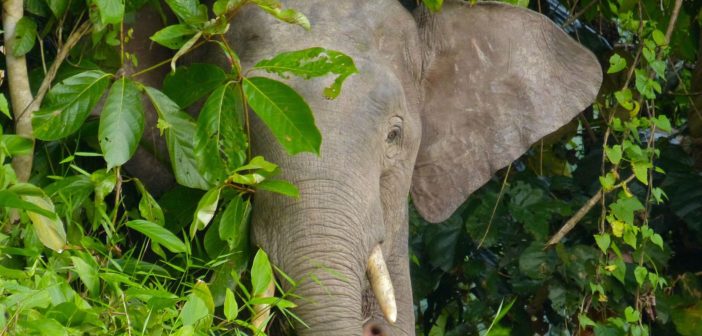Elephants are no match for poachers. The macabre butchering of two Borneo pygmy elephants, found dead on December 31, 2016, shows that poachers abound in almost every corner of the country, waiting to strike when least expected.
In the past, pygmy elephants have become the victims of poisoning, reportedly by oil palm plantation workers in order to deter elephants from eating the fruit of the palm trees. Last September, a group of elephants were stuck in a mud pool in Rinukut for a week, leaving seven dead.
How many more disastrous outcomes will befall the elephants before the Sabah government wakes up to the fact that political willpower, and concerted effort and serious protection from all relevant agencies, are needed if wildlife is to survive in Sabah? Piecing together a conservation area four times the size of Penang island will not help if the Class I totally protected forest reserve can be degazetted again, or fragmented by a bridge in the middle of the sanctuary.
In the case of the macabre slaughter and mutilation of the two elephants, what brought the individual known as Sabre to his end was the wide publicity given to his unusual downward slanting, sabre like tusk.
The Sabah Environment Ministry and the relevant authorities should have known better than to go all out publicising their discovery. With images of the mini-elephant going viral on social media and electronic print, these will naturally incite poachers’ desire to get at the animal’s valuable tusks. It must not be forgotten that the Internet is now a medium of choice for wildlife traders and poachers. Images posted on sites such as Facebook, Twitter and Instagram can all betray details of a species’ location.
Poachers are scouring popular social media sites looking for any leads on where to find endangered species. Many are unaware that poachers are able to use photographs of incredibly rare lions, tigers and elephants to find and kill the species, by downloading digital data attached to the images that will reveal the exact locations of animals. Many modern cameras and smartphones automatically record the exact time and location where an image is taken, and this data is often transferred when a photograph is uploaded on to social media.
In this age of extinctions, governments love to trumpet any rare or unique findings of species, revealing biological and geographical data. The choice to employ a ‘publicize and protect’ strategy must be based on secrecy, particularly of the exact whereabouts of species’ locations, while making effective conservation solutions all the more urgent. Publicity can generate financial and political support to prevent species from becoming extinct, but it may also backfire when publicity creates threats that were previously absent.
Unique findings require immediate major conservation interventions, which given the track record of conservation in Sabah are unlikely to be effective. Whether or not a species is listed as endangered or threatened depends on a number of factors, including the urgency of preventing extinction and whether adequate protections exist through other means.
The UK Guardian reported that academic journals have begun withholding the geographical locations of newly discovered species, after being warned that the data is helping poachers and smugglers drive lizards, frogs and snakes into near extinction with their collection. Endangered animals and plants are often the target of wildlife crime because of their rarity. The International Union for Conservation of Nature (IUCN) has guidelines prohibiting the publication of location data for endangered species of high economic value.
It is about time our wildlife are not put at risk of or exposure to loss, harm, death, or injury through widespread publicity.
S M Mohd Idris
President
Sahabat Alam Malaysia (SAM)
Featured image: Borneo pygmy elephant in Sabah, Malaysia. Credit Bernard DUPONT, CC BY-SA 2.0





